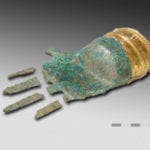 Movies and TV
Movies and TV  Movies and TV
Movies and TV  Creepy
Creepy 10 Lesser-Known Shapeshifter Legends from Around the World
 Animals
Animals 10 Amazing Animal Tales from the Ancient World
 Gaming
Gaming 10 Game Characters Everyone Hated Playing
 Books
Books 10 Famous Writers Who Were Hypocritical
 Humans
Humans 10 of the World’s Toughest Puzzles Solved in Record Time
 Mysteries
Mysteries 10 Scientific Mysteries We Don’t Fully Understand
 Weird Stuff
Weird Stuff 10 Celebrities Who Have Admitted to Alien Encounters
 Our World
Our World 10 Surprising Secrets of Notre Dame Cathedral
 Miscellaneous
Miscellaneous 10 Intriguing Origins of Popular Carnival Rides
 Movies and TV
Movies and TV 10 Actors Dragged out of Retirement for One Key Role
 Creepy
Creepy 10 Lesser-Known Shapeshifter Legends from Around the World
 Animals
Animals 10 Amazing Animal Tales from the Ancient World
Who's Behind Listverse?

Jamie Frater
Head Editor
Jamie founded Listverse due to an insatiable desire to share fascinating, obscure, and bizarre facts. He has been a guest speaker on numerous national radio and television stations and is a five time published author.
More About Us Gaming
Gaming 10 Game Characters Everyone Hated Playing
 Books
Books 10 Famous Writers Who Were Hypocritical
 Humans
Humans 10 of the World’s Toughest Puzzles Solved in Record Time
 Mysteries
Mysteries 10 Scientific Mysteries We Don’t Fully Understand
 Weird Stuff
Weird Stuff 10 Celebrities Who Have Admitted to Alien Encounters
 Our World
Our World 10 Surprising Secrets of Notre Dame Cathedral
 Miscellaneous
Miscellaneous 10 Intriguing Origins of Popular Carnival Rides
10 Interesting And Unusual Wikipedia Articles
In this day of online collaboration, the internet encyclopedia Wikipedia stands at the forefront of collected knowledge, due to its interface allowing anyone to edit. Because of this, Wikipedia’s collection of articles contains not only the normal and mundane, but also many articles you might not expect to find in Encyclopædia Britannica. Hopefully, this list will be able to deliver to you some entertainment, and perhaps expand your knowledge. All of the entries you are about to read are valid articles from Wikipedia, slightly condensed and listed by category. No guarantee of validity is attached to these articles, and readers are encouraged to comment here and change the things that they think are wrong on Wikipedia. For a full and rather lengthy list of interesting or strange articles compiled by Wikipedians themselves, go here , or simply search Wikipedia for “Wikipedia:Unusual articles”.
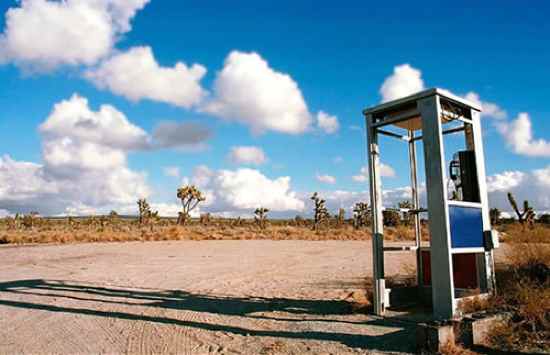
The Mojave phone booth was a lone telephone booth in what is now the Mojave National Preserve in California, which attracted online attention in 1997, due to its unusual location. Placed in the 1960s, the booth was eight miles (13 km) from the nearest paved road, fifteen miles (24 km) from the nearest numbered highway, and miles from any buildings. The original hand-cranked magneto phone had been set up in the 1960s to provide telephone service to local volcanic cinder miners, and other people living in the area. Godfrey Daniels, a local computer entrepreneur, found the telephone and started the first of several websites devoted to the booth. Soon, fans called the booth attempting to get a reply, and a few took trips to the booth to answer. Over time, the booth became covered in graffiti, as many travelers would leave messages on it. It was finally removed by Pacific Bell on May 17, 2000, at the request of the National Park Service. Officially, the removal was done to halt the environmental impact of visitors, though pressure from locals unhappy with the increased traffic may have contributed.
Also: Places with fewer than ten residents; Action Park; Argleton; Gate Tower Building; Hell, Norway; Moon Museum

Manhattanhenge (sometimes referred to as the Manhattan Solstice) is a semiannual occurrence in which the setting sun aligns with the east-west streets of the main street grid in the borough of Manhattan, in New York City. The term is derived from Stonehenge, at which the sun aligns with the stones on the solstices. At sunset, a traveler along one of the north-south avenues on the West Side looking east can observe the phenomenon indirectly, being struck by the reflected light of the many windows which are aligned with the grid. An observer on the East Side can look west and see the sun shining down a canyon-like street. The dates of Manhattanhenge are usually May 28 and July 12 or July 13 (spaced evenly around Summer Solstice). The two corresponding mornings of sunrise right on the center lines of the Manhattan grid are approximately December 5 and January 8 (spaced evenly around Winter Solstice). The same phenomenon occurs in other cities with a uniform street grid; in Chicago, Illinois, for instance, the setting sun lines up with the grid system on September 25, a phenomenon known similarly as Chicagohenge.
Also: Dagen H; 0.999; Indiana Pi Bill
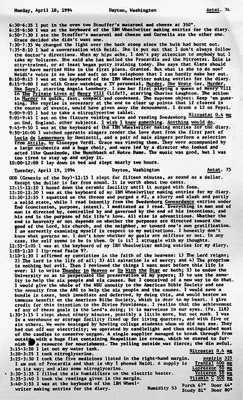
Robert Shields (May 17, 1918-October 15, 2007) was a former Minister and high school English teacher who lived in Dayton, Washington, USA, who, after his death, left behind a diary of 37.5 million words chronicling every five minutes of his life from 1972 until a stroke disabled him, in 1997. Believing that discontinuing his diary would be like “turning off my life”, he spent four hours a day in the office on his back porch, in his underwear, recording his body temperature, blood pressure, medications, describing his urination, and slept for only two hours at a time so he could describe his dreams. He once said “Maybe by looking into someone’s life at that depth, every minute of every day, they will find out something about all people.” Shields’s work now fills 94 cartons in the collections of Washington State University, to whom he donated the work, in 1999. Under the terms of the donation of his diary to the university, the diary may not be read or subjected to an exact word count until 50 years after his death. Above is a photo of a released excerpt of the diary.
Also: Colorless green ideas sleep furiously; Dord; Toynbee tiles; Words without vowels; Wolfe+585, Senior
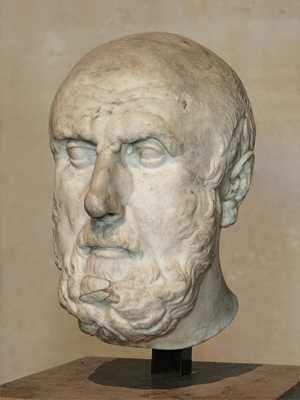
In the ninth century B.C., the Greek stoic philosopher Chrysippus (above) died of laughter, after giving his donkey wine then seeing it attempt to feed on figs. On March 24, 1975, Alex Mitchell, a 50-year-old bricklayer from King’s Lynn, England, died laughing while watching an episode of the television series The Goodies. After twenty-five minutes of continuous laughter, Mitchell finally slumped on the sofa and died from heart failure. His widow later sent The Goodies a letter thanking them for making Mitchell’s final moments of life so pleasant. In 1989, a Danish audiologist, Ole Bentzen, died laughing while watching the film A Fish Called Wanda. His heart was estimated to have beaten at between 250 and 500 beats per minute, before he succumbed to cardiac arrest.
Also: The Mississauga Blob; Colors of noise; Drake’s Plate of Brass; Flat Earth society; Sylacauga (meteorite); Infinite monkey theorem
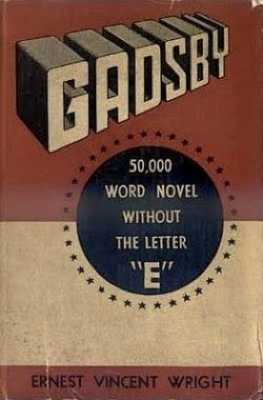
Gadsby: A Story of Over 50,000 Words Without Using the Letter “E” is a 1939 novel by Ernest Vincent Wright. The plot revolves around the dying fictional city of Branton Hills, which is revitalized thanks to the efforts of the protagonist, John Gadsby, and a youth group he organizes. The novel’s 50,110 words do not contain a single letter “e.” Though self-published and little-noticed in its time, the book is a favorite of fans of constrained writing and is a sought-after rarity among some book collectors. In Gadsby’s introduction, Wright says his primary difficulty was avoiding the “-ed” suffix for past tense verbs. He focused on using verbs that do not take the “-ed” suffix and constructions with “do” (for instance “did walk” instead of “walked”). Scarcity of word options also drastically limited discussion involving quantity, pronouns and many common words.
Also: The Game; Le Pétomane; real life superheroes; Larry Walters; William McGonagall; As Slow As Possible; The Longest Most Meaningless Movie in the World
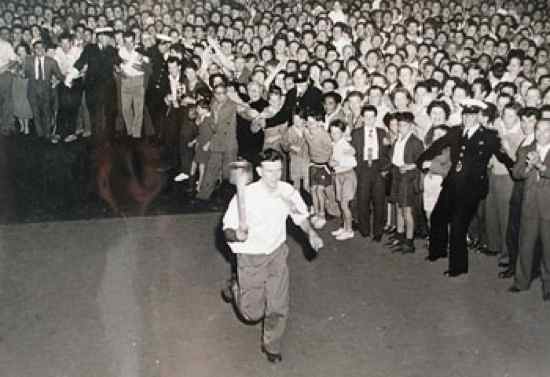
Barry Larkin and eight other students at St John’s College, University of Sydney, planned to poke fun at the Olympic Torch relay during the 1956 Summer Olympics in Melbourne, Australia. This was because they felt it was being treated with too much reverence, considering the tradition’s dubious past (it traces its origins back to the 1936 Berlin games organized by the Nazis.) The plan was to get one of the other students to carry a fake torch made of a wooden chair leg painted silver, on top of which was a plum pudding can. A pair of underpants was put inside the can, soaked in kerosene. The real torch was scheduled to enter Sydney, where the runner would present it to the mayor of Sydney, at Sydney Town Hall. The mayor would then make a speech and pass the torch to the next runner. Before the real torch arrived, two students went out carrying the fake torch. At the beginning, people noticed they were joking and even the police laughed at them. Then the underpants fell out of the torch because the fake runner was swinging his arms too hard. Peter Gralton, one of the nine students, went to get the pants and told Larkin to pick up the torch. With Larkin holding the torch, Gralton kicked Larkin’s backside and told him to run. Larkin did so, running the rest of the way to Sydney Town Hall. He ran the rest of the route, protected by police who thought that he was the real runner. Larkin then presented the torch to the mayor. As he was unprepared, the mayor did not look at the torch and went straight to his speech. While he was talking, Larkin quietly walked away, avoiding attention. The mayor was eventually told the torch was a fake when someone whispered in his ear. The mayor looked around for Larkin, but by now Larkin had merged into the crowd and escaped. When people discovered that the torch was a fake, they began to grow unruly. The mayor had to calm down the crowd and the police had to clear a path to allow the real runner to get through. By the time the next runner took the torch, an army truck had to clear his path. When Larkin returned to university, he was given a standing ovation by fellow students when he attended an exam later that morning. Larkin went on to become a successful veterinary surgeon.
Also: Bladderball; Curse of the Colonel; Traditions and anecdotes associated with the Stanley Cup

What is believed to be the world’s only Bigfoot trap is located in the Siskiyou National Forest, in the southern part of Jackson County, Oregon, a few miles from the California state border. It was designed to capture a Bigfoot (or Sasquatch), the legendary hominid that is said to live in the forests of the Pacific Northwest. The trap was built in 1974, by the North American Wildlife Research Team (NAWRT), a now-defunct organization based in Eugene, Oregon. They were inspired to build a trap at the location by Perry Lovell, a miner who lived near the Applegate River, who claimed to have found 18-inch-long human-like tracks in his garden. NAWRT operated the trap, keeping it baited with carcasses for six years, but caught only bears. Since then the trap had been abandoned and was deteriorating. In 2006, the United States Forest Service, began to repair the trap. The trap has become a tourist attraction over the past 30 years, and hundreds of people visit it annually. The Forest Service keeps an eye on the device, but otherwise does not maintain it.
Also: Chicken or the egg; Jackalope

The first company to offer UFO abduction insurance was the St. Lawrence Agency, in Altamonte Springs, Florida. The company pays the claimant $1 per year until their death, or for 1 million years, whichever comes first. The company says that it has paid out at least two claims, and over 20,000 people have purchased the insurance. Simon Burgess, former Managing Director of British Insurance, well known for being involved in the bizarre end of insurance, said “Of course, the burden of proof lies with the claimant. Let’s face it—insurance is so tedious that if I can enlighten my dreary life with a bit of humor every now and again, I will.” The insurance is normally purchased by the “feeble-minded,” according to Burgess. A policy normally costs around $150 per $1.5 million in coverage, as of 1998. Some companies offer policies for alien pregnancy, alien examinations and death caused by aliens.
Also: Lawsuits against God; Burning money; Jimmy Carter rabbit incident

The Jedi census phenomenon is a grassroots movement that was initiated, around 2001, for citizens of a number of English-speaking countries, urging them to record their religion on national censuses as “Jedi” or “Jedi Knight” after the quasi-religious order of Jedi Knights in the fictional Star Wars universe. It is believed the majority of self-reported Jedi claimed the religion for their own amusement, to poke fun at the government, or as a protest against the inclusion of the religion question on the census form. In England and Wales, 390,127 people (almost 0.8%) stated their religion as Jedi on their 2001 Census forms, surpassing Sikhism, Judaism and Buddhism, and making it the fourth largest reported religion in the countries. Jedi was assigned its own code in the United Kingdom for census processing. Officials from the Office for National Statistics in the UK pointed out that this merely means that it has been registered as a common answer to the “religion” question, and that this does not confer on it the status of official recognition. In 2001, over 53,000 people listed themselves as Jedi in New Zealand’s census. New Zealand had the highest per capita population of reported Jedi in the world that year, with 1.5% marking “Jedi” as their religion. New Zealand treated Jedi responses as “Answer understood, but will not be counted.” If Jedi were counted it would have been the second largest religion in the country. John Pullinger, Director of Reporting and Analysis for the Census in the United Kingdom, noted that many people who would otherwise not have completed a Census form did so solely to record themselves as Jedi, so this joke helped to improve the quality of the Census.
Also: Religion in Antarctica; Cargo cult; Jerusalem Syndrome

Lal Bihari (or Lal Bihari Mritak, born 1961) is a farmer from Uttar Pradesh, India, who was officially dead between 1976 and 1994. When Lal Bihari tried to apply for a bank loan in 1976, he found out that he was officially dead: his uncle had bribed a government official to register him as dead, so that he would get the ownership of Bihari’s land. Bihari discovered at least 100 other people in a similar situation. He and many others were in danger of being killed by those who had appropriated their property. Over the years, Bihari tried to attract attention to his situation by various means. He organized his own funeral and demanded widow’s compensation for his wife. In 1980, he added the word “mritak” (“dead”) to his name, and signed his letters “late Lal Bihari.” In 1994, he managed to have his official death annulled. In 2004, he ran for a seat in the parliament of Lal Ganj. Bihari continues to support other people in similar situations.
Also: Chess-related deaths; List of expressions related to death; Sky burial; Video-Enhanced Grave Marker






